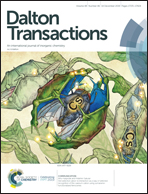Dual surface modification of carbon materials by polydopamine and phosphomolybdic acid for supercapacitor application†
Abstract
Surface modification of carbon materials is an important issue for its potential application. In this work, this purpose has been successfully achieved by the incorporation of polydopamine (PDA) and phosphomolybdic acid (PMA), forming carbon/PDA/PMA hybrid electrode materials, in which PDA acts both as a linker molecule and as a pseudo-capacitance provider, and PMA contributes to pseudo-capacitive performance. It is revealed that adding PDA and/or PMA results in a decrease of porosity but in an increase of electrical conductivity and thus a suitable combination of porosity, conductivity, and pseudo-capacitance is vital for achieving the optimization of capacitive performance. By using the Trasatti method, we found out that increasing PDA or PMA results in the improvement of pseudo-capacitance proportion and the C-PDA/PMA-1 : 1 sample exhibits a pseudo-capacitance proportion of 32%. In a two-electrode configuration, the C-PDA/PMA-1 : 1 sample delivers a specific capacitance of 101 F g−1 at 1 A g−1, a cycling performance of 108% within 10 000 cycles, and an energy density of 3.5 W h kg−1 (nearly 3.2 times that of the C-blank sample) at 500 W kg−1. Moreover, the dual surface modification of PDA and PMA could be extended to other energy storage systems, highly improving capacitive performance by the synergic effect.



 Please wait while we load your content...
Please wait while we load your content...